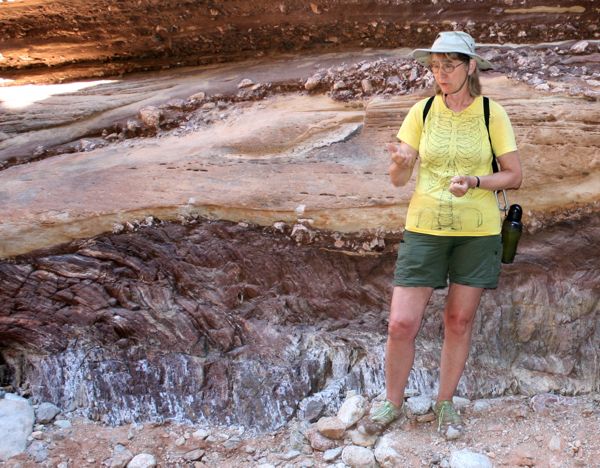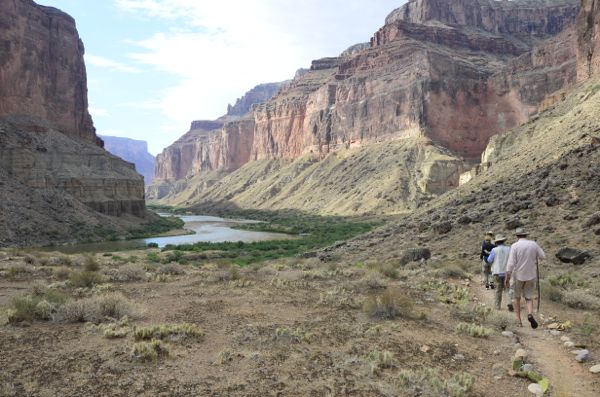The recent federal government shutdown involved not only furloughing federal employees but also restricting access to our national parks. From Yosemite to Yellowstone, from Bryce Canyon to the Bright Angel Trail, countless people were turned away from what, for some, could have been a once in a lifetime experience. At the Lee’s Ferry launch site, where Grand Canyon river trips begin, rafters who endured a decade-long waiting list were prevented from launching on their appointed day. This unnecessary obstruction was the least-justifiable of the shutdown’s manifestations, for natural areas exist quite well on their own, unlike a museum which must be lit and guarded. It’s easy to imagine a shutdown where rangers clocked out and left the gates open on the way out, inviting the kind of freedom which should be part of the liberating experience of being in nature. But that’s not the way America works anymore; everything which is not explicitly allowed is strictly forbidden.

Now that our national parks have reopened, it is worth investigating how these parks fit into the creation/evolution issue. I’m going to address this in a series of posts about how creationists use our natural heritage to promote their anti-science agenda. Of course, creationists might well respond that as the public owns this land, scientists also are out of bounds to use our national heritage to promote a pro-science agenda.
Creationists often imply that to accept science (especially evolution) is to reject God. In line with this spurious way of thinking, they argue that having National Park Service rangers give talks to visitors about the Grand Canyon in terms of millions of years is an infringement of religious rights. Not being allowed to have bronze plaques on the South Rim quoting biblical verses is viewed an assault on their liberty. In a strange twist, the park association bookstores are forced to carry Tom Vail’s creationist coffee-table book about the Grand Canyon, over the objections of many scientific groups.
Tom Vail is an experienced Grand Canyon river guide who made his first run with (and later guided for) the legendary Georgie White Clark, a famous rafting pioneer. Vail now runs Canyon Ministries, offering “Christ-centered rafting trips” down the Colorado. Such trips take a young-earth creationist perspective on “this gigantic remnant of the Biblical Flood” and show “people how what we read in the Bible is seen between the walls of the Grand Canyon.”
Many people are surprised to hear that one can take a rafting trip to explore the Grand Canyon from the perspective of Noah’s Flood. On such trips participants learn how the receding waters of the Flood rapidly eroded the thick sediments deposited during the Flood year. Such trips often stop near Nautiloid Canyon to examine cephalopod fossils purportedly recording the mass death of all organisms not on Noah’s Ark. At various places along the river, such as Blacktail Canyon, one can touch rocks purported to be from the original days of creation scoured by the onset of wrathful Flood waters.

Personally touching such “original” rocks has a definite appeal to some. Creation, Evolution, and Science Ministries advertises its “Christian-based Grand Canyon & Grand Staircase tours” as a way to “see & touch Original Creation rock, Pre-flood layers, Judgment rock and much more!” (Many geology students will recall exams involving difficult samples that seemed to be our own personal “Judgment rocks.”)
Geology students at Ohio’s Cedarville University (where the doctrinal statement declares, “We believe in the literal six-day account of creation”) have been present at Geological Society of America (GSA) conferences. Cedarville student posters have attempted to cast doubt on the traditional interpretation of the Grand Canyon’s Coconino Sandstone as a wind-deposited formation. They do this because the Coconino is sandwiched between rock layers supposedly laid down the during Flood year; having a rock formation that formed in dry, desert conditions in the middle of a global deluge is hard to explain. They have therefore gone to great efforts to question the standard thinking about the Coconino, using standard techniques employed by geologists.
In a way, this is healthy for science; gadflies keep us on our toes, and may help identify soft spots in our thinking; it doesn’t hurt to double-check one’s assumptions. In any event, geology is probably not going to experience a Kuhnian crisis because of a handful of posters. Likewise, though some might harrumph at the idea of creationist rafting trips, any citizen who wants to enjoy the Grand Canyon should have the right to do so, federal closures notwithstanding.

But endorsing open access to scientific conferences and rafting permits does not mean that we have to accept without critique what creationists say about geology. In the next few posts I will examine their claims and show why the evidence we see in the Grand Canyon clearly does not support a global flood.
Up next: The top five creationist claims about the Grand Canyon.
